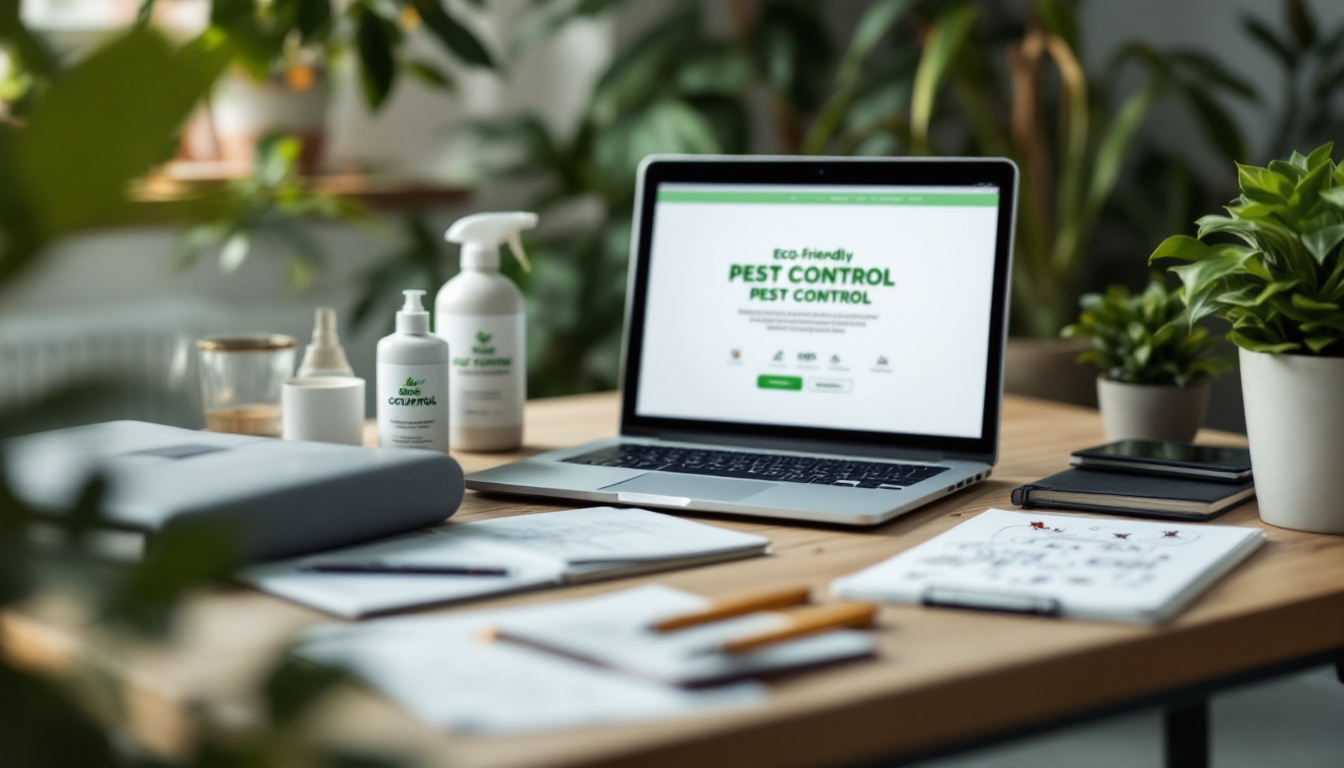3 Forms of Documentation to Have on Hand for Third-Party Audits
2025 is a pivotal year for businesses—especially those in the food processing industry—as third-party audits become increasingly common. These audits are essential for ensuring compliance with health and safety regulations, as well as maintaining customer trust. One of the most critical aspects of preparing for these audits is having the right documentation readily available. This article explores three essential forms of documentation that can significantly streamline the audit process and enhance overall pest management strategies.
Pest Control Services Overview
Pest control services play a vital role in maintaining a safe and hygienic environment for various industries. With the potential for pest infestations to disrupt operations and damage reputations, effective pest management is more important than ever. Understanding the landscape of pest control options—ranging from conventional methods to integrated pest management (IPM)—can help businesses make informed decisions regarding their needs. In addition to protecting physical assets, these services ensure that both employees and customers are safeguarded against potential pesticides misuse and inadvertent pesticide exposure.

Regular monitoring of pest activity and thorough pest identification help businesses in managing pests effectively. Documenting each step is not only crucial for compliance but also in preventing pest damage and mitigating any pest problem before it escalates. It is equally important to note that every pest is an organism with unique behaviors; understanding these traits can aid in selecting the most appropriate control method for controlling pests.
Importance of Effective Pest Management
Effective pest management is not solely about eliminating pests; it involves a comprehensive approach that includes prevention, monitoring, and control. This holistic strategy ensures that potential pest infestations are addressed before they escalate. For businesses—particularly in food processing—maintaining a pest-free environment is crucial for compliance with health regulations and safeguarding product integrity. Neglecting proper pest control can lead to significant pest damage, costly downtime, and even legal liabilities.
Implementing integrated pest management combines the best of several control methods—including chemical, biological, and cultural approaches—to reduce the overall pest population. With attention to pesticide regulation and safe pesticide application, companies can minimize risks not only to workers but also to nontarget organisms such as beneficial insects and honey bees. Such measures help in reducing both pesticide exposure and unwanted effects on the environment.
Regular training and awareness programs further enhance management practices among staff. Learning to identify pests correctly and monitor pest activity is essential. This proactive stance enables a prompt pest control action to disrupt pest mating cycles and ultimately reduce the likelihood of a single pest becoming a broader infestation.
Innovative Approaches: Pesticides and Biological Control
Modern pest management now relies on a balanced use of pesticides and biological control. Here, we dive deeper into these methods to help you understand how they work together:

The Role of Pesticides in Pest Management
Pesticides remain a cornerstone in many pest control programs. When applied correctly, pesticides provide rapid reduction in pest numbers. It is essential, however, to follow strict pesticide regulation guidelines to prevent overuse and to protect nontarget organisms as well as non target organisms. Regular reviews of pesticide use and careful pesticide application protocols are necessary to ensure that pesticides work effectively without causing undue pesticide exposure.
In many facilities, routine checks are performed to monitor pesticides residue levels and to ensure that pesticide regulation standards are met.
Experts advise that proper pesticides handling not only minimizes risks but also aids in keeping the pest population under control.
Additionally, clear documentation of pesticides used, including details of pesticide application, helps verify compliance during audits.
Advancements in Biological Control and Natural Enemies
Alongside chemical measures, biological control offers an eco-friendly alternative for controlling pests. This method involves harnessing natural enemies of pests, including beneficial insects, to maintain a balanced ecosystem.
Biological control methods reduce reliance on pesticides and help in lowering pesticide exposure risks.
Research has shown that promoting beneficial insects can be an effective control method against a wide range of pest species.
Interrupting pest mating cycles through the introduction of specific biological control agents further contributes to reducing the overall pest population.
Many growers now combine integrated pest management with targeted biological control to keep pest numbers low while protecting sensitive invertebrate groups.
Agricultural Considerations in Pest Management
For growers and businesses involved in agriculture, pest management extends well beyond traditional settings.
Growers must remain vigilant, as crop and plant health can be severely impacted by pest infestations.
The presence of a weed can also signal broader issues, making pest identification critical in preventing pest establishment.
Advanced technologies now assist in identify pests rapidly, ensuring that even a single pest does not lead to major pest infestation.
Various available pest control methods—from targeted insecticide applications to selective pesticides—are employed to protect crops and plants from pest damage.
Farmers and agricultural experts should also take into account natural enemies that help regulate insect populations. By understanding different pest species and their behaviors, a more effective pest management strategy can be devised. Moreover, the involvement of organizations such as the national pest management association provides guidelines that aid in setting robust management practices for both crop and plant protection.
Comprehensive Strategies for Managing Pests
Businesses today must implement comprehensive commercial pest control strategies that cover every aspect of pest management strategy development.
Keeping detailed records of pest identification and monitoring pest activity is key to managing pests effectively.
It is important to document every method used, whether it be pesticide application or biological control, to ensure that each control method is working as intended.
Understanding the differences between pest species and assessing pest damage can aid in fine-tuning these strategies.
Regular inspections help in early detection of infestation and prevent long-term pest establishment.
In some cases, special attention is given to vertebrate pests which require unique management practices compared to invertebrate pests.
When evaluating available pest control methods, companies should consider not only the immediate results but also the long-term benefits of sustainable pest management. This includes employing techniques that reduce the negative impact on non target organisms while keeping pesticide reliance to a minimum.
Best Practices and Regulatory Standards
A robust approach to pest management involves adherence to strict pesticide regulation and detailed documentation of all management activities.
It is critical for businesses to follow approved management practices and to record each pest control action taken.
Training programs that focus on pest prevention help employees learn how to identify pests early and take swift control action.
Monitoring pest activity on a regular basis ensures that any signs of pest damage or an emerging pest problem are promptly addressed.
For example, facilities may hold workshops on pest control that include demonstrations on proper pesticide application and safe pesticide use. Such programs also stress the importance of protecting honey bees and other beneficial insects, as well as minimizing pesticide exposure to staff and invertebrate populations. The use of precise control methods—backed by guidance from the national pest management association—helps maintain a secure environment while supporting overall sustainable pest management.
Documentation and Audit Preparation
Having the right documentation is essential for both internal reviews and third-party audits. A well-organized system should include records of all pest management activities, details on pesticides used, and data on pest identification and pest control measures. Here are three key forms of documentation to have on hand:

Inspection Reports and Treatment Logs
Maintain clear records that outline the pest management strategy employed. Document every pesticide application and control method used, along with the outcomes. Note any changes in pest population or pest activity to provide evidence of continuous improvement.
Employee Training Materials and Checklists
Include guidelines on effective pest management and how to identify pests early. These materials should also cover the importance of following pesticide regulation and safe pesticide use practices. Detailed checklists ensure that even minor signs of pest establishment are reported.
Audit-Ready Documentation for Food Processing Facilities
For industries like food processing, a comprehensive checklist is invaluable. Records should include pest control action reports, pest prevention measures, and updates on pest management practices. Documenting how you address pest damage and prevent infestation will help during audits and demonstrate commitment to high standards.
By diligently recording every detail—from pesticide application to monitoring pest mating behaviors—businesses can not only meet regulatory requirements but also set a benchmark for sustainable pest management.
Conclusion
In conclusion, maintaining rigorous documentation and following best practices in pest management are essential for third-party audits. By combining integrated pest management, targeted pesticides use, and advanced biological control methods, businesses can effectively manage pest species and mitigate pest damage. Whether you are a food processor or an agricultural grower, detailed records and proactive pest prevention strategies ensure that pest control remains efficient and that every pest problem is swiftly addressed.
A strong commitment to best practices—including adherence to pesticide regulation, careful pesticide application, and monitoring of pesticide use—builds trust and safeguards both your operations and the environment. Continuous efforts in managing pests, protecting beneficial insects, and understanding each insect and invertebrate as a unique organism are the hallmarks of an effective pest management strategy.
Ready for Your Next Audit with EnviroGuard Pest Control
Don't let pest management concerns disrupt your business operations or compromise your next audit. At EnviroGuard Pest Control, we bring over 40 years of combined experience to ensure your property remains pest-free with environmentally friendly solutions. Our local experts in Austin, Texas, are committed to delivering the best in pest control services—from termite and rodent control to comprehensive pest solutions that align with your business's needs. Trust us to provide attentive customer service and "family-friendly" products that safeguard your health and your business's reputation. Contact Us today to partner with a family-owned enterprise that values honest work and a healthy environment for all our clients.

